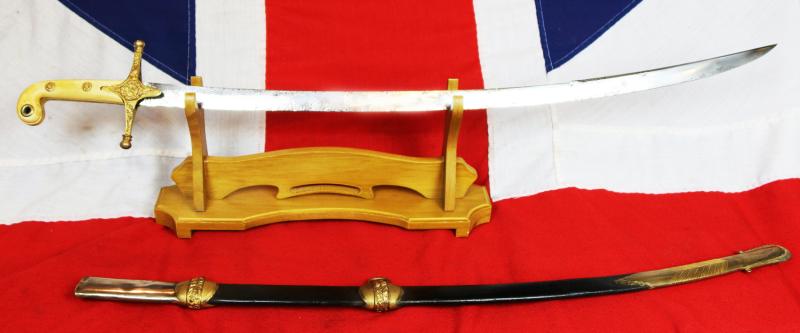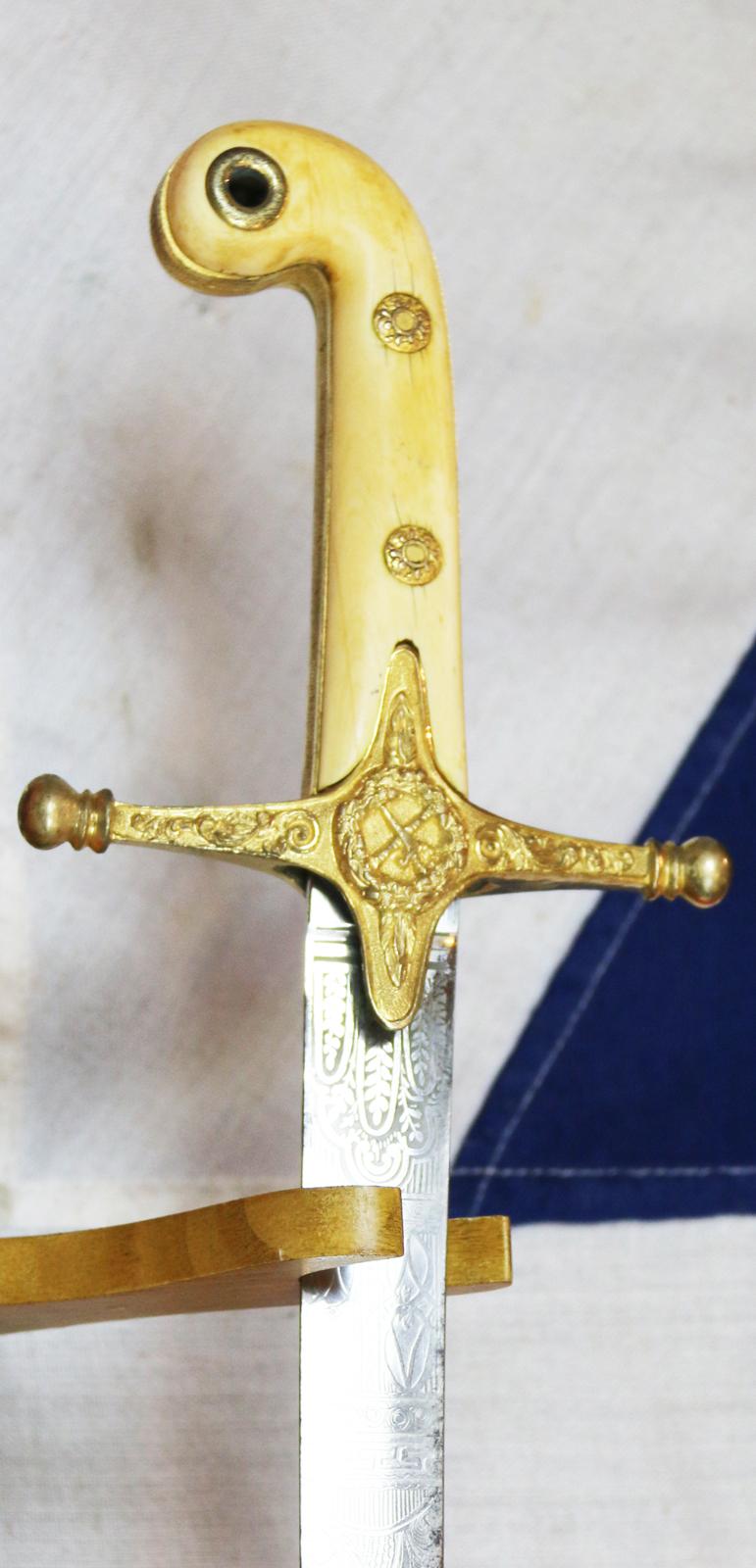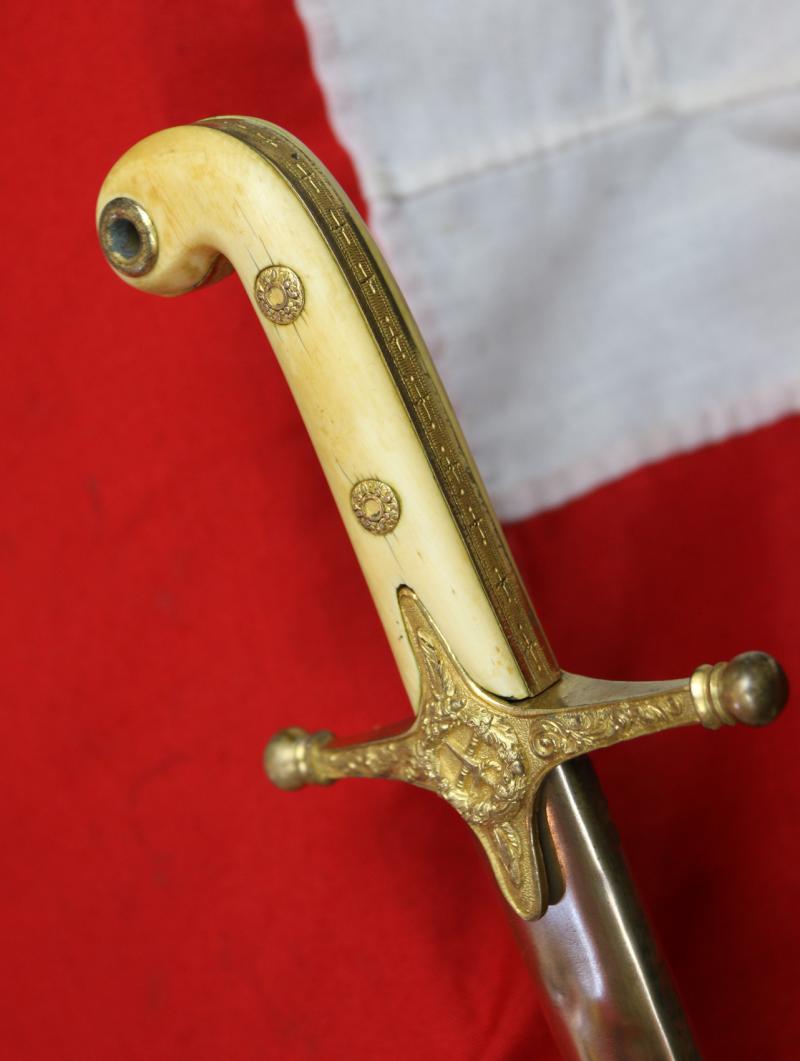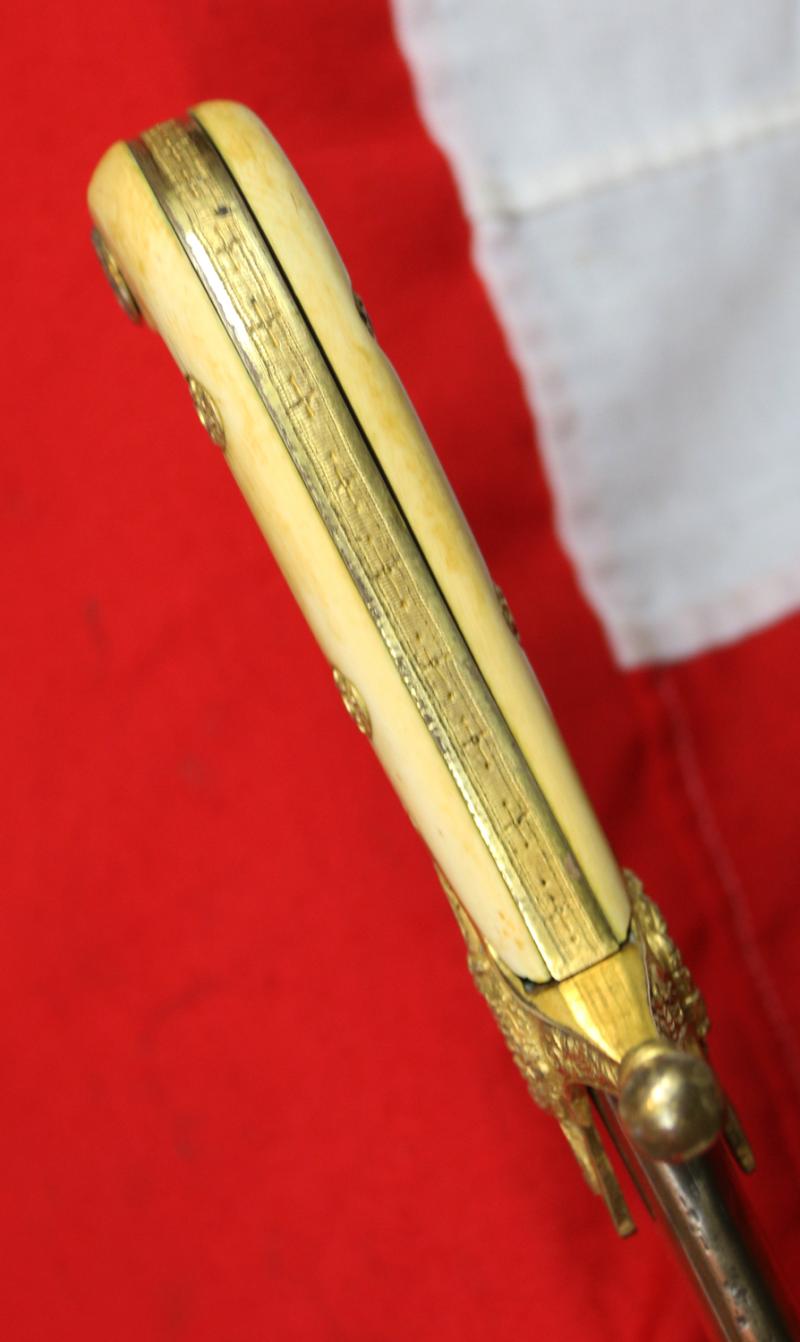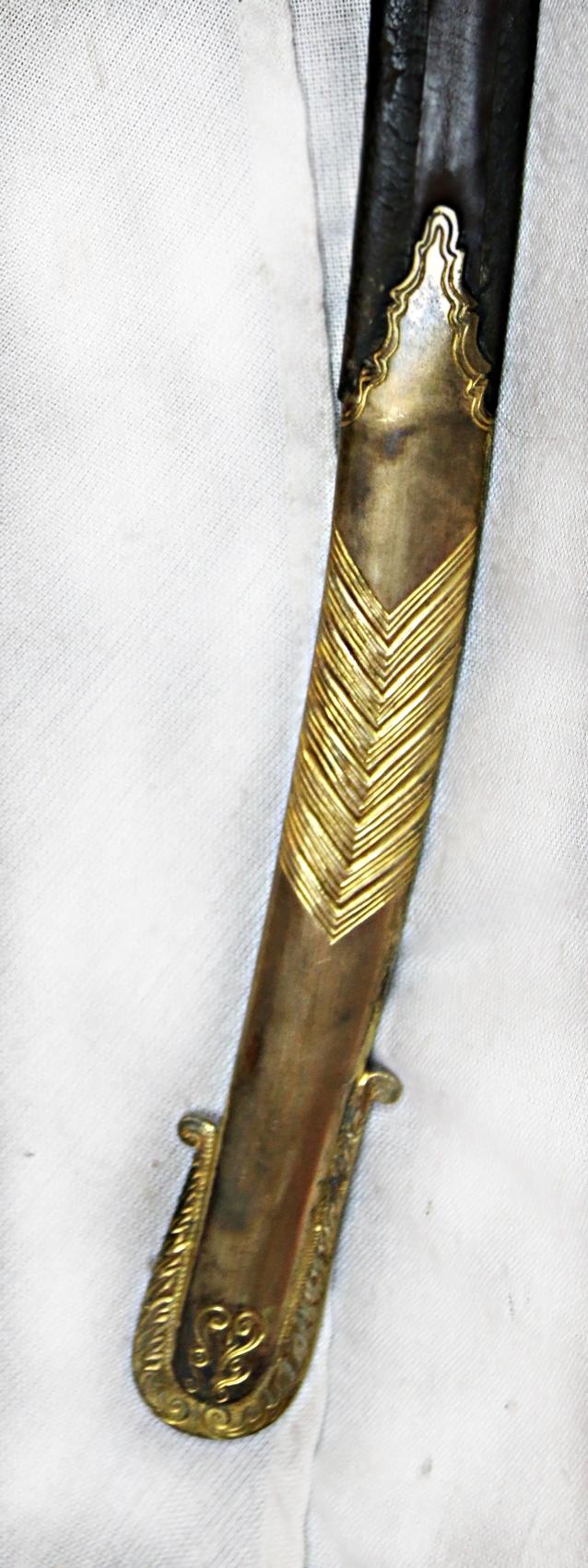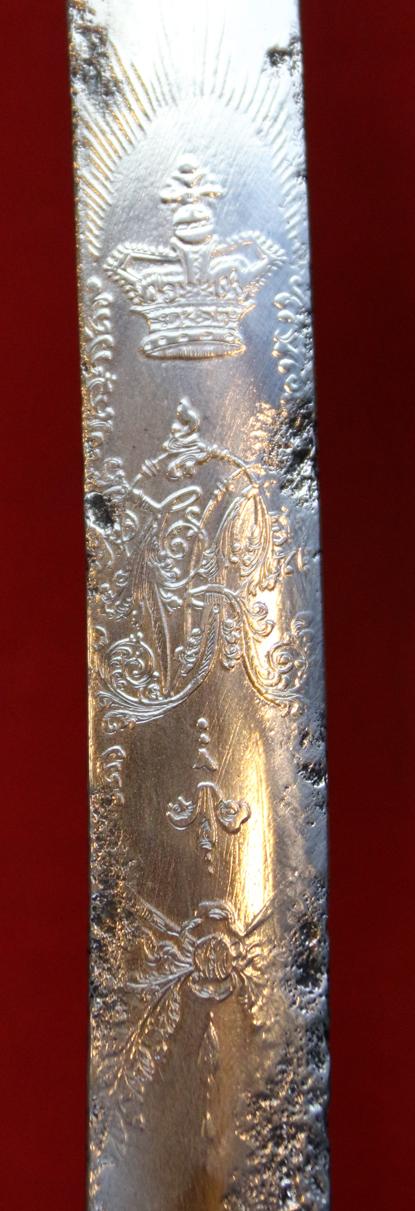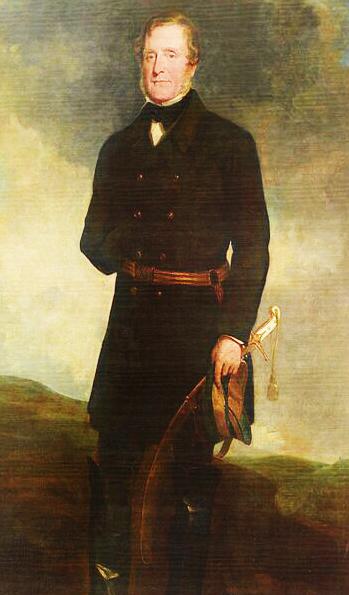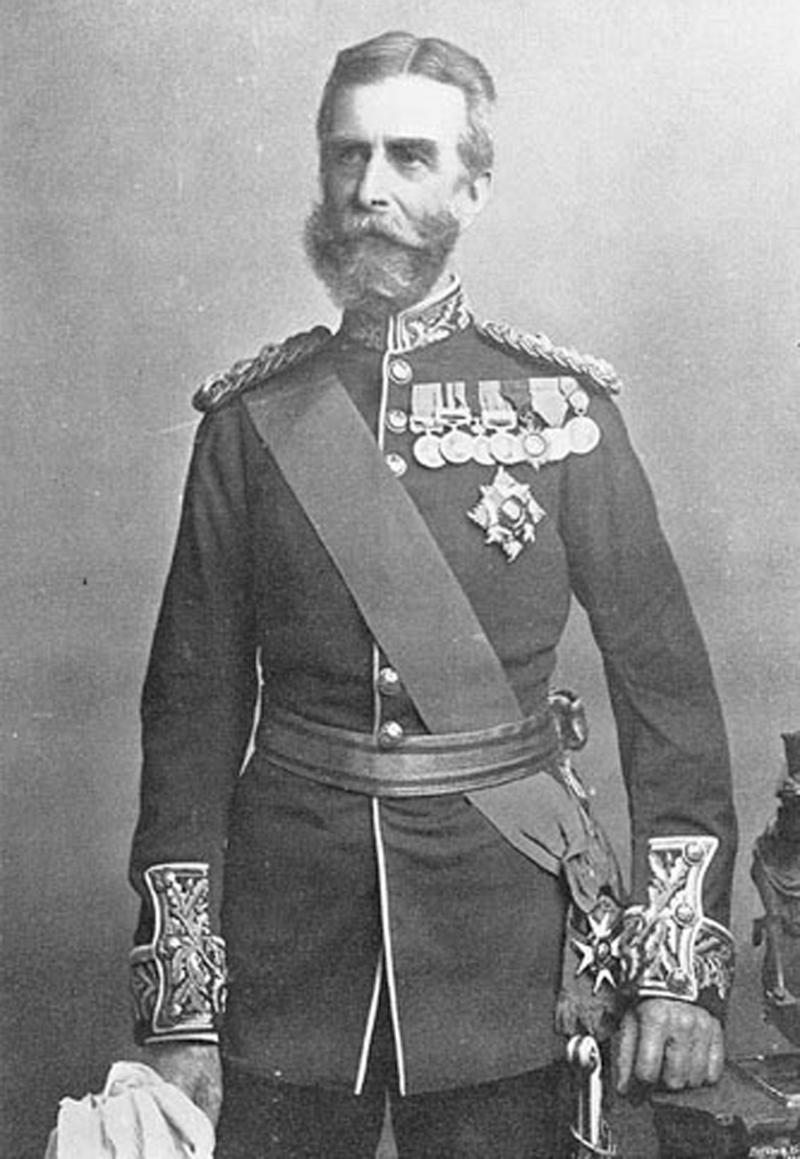Crimean War, Indian Mutiny & Zulu War Service 1831 Pattern General Officer's Sword Mamaluke with Rare Copper Gilt & Leather Mounted Scabbard
This general's sword was bespoke commissioned and thus as used in the Crimean War, the Indian Mutiny, and the Zulu War, by a general of the British army. Most later Generals swords have the brass scabbard, which is still in use today, but the best and earliest types of generals sword have the leather with copper gilt mounted scabbards, as this one has, that was originally designed in the Napoleonic Wars
It is near identical to the sword of General Raglan of the Charge of the Light Brigade fame in the Crimean War. See photo 9 in the gallery of General Lord Raglan with his same sword. General Raglan became commander of the British troops sent to the Crimea in 1854: his primary objective was to defend Constantinople, and he was also ordered to besiege the Russian port of Sevastopol. After an early success at the Battle of the Alma, a failure to deliver orders with sufficient clarity caused the fateful Charge of the Light Brigade at the Battle of Balaclava.
Promoted to major-general in June 1854, it was his service in the Crimean War (1854-56) that brought him to public attention and finally made his reputation.
This sword is also just as used by General Colin Campbell in both the Crimean war and the Indian Mutiny. He commanded the Highland Brigade with notable success at the Battle of the Alma (1854). And at Balaklava (1854), his 'thin red line' of Highlanders repulsed the Russian cavalry assault.
Later in the campaign, Campbell took over command of the 1st Division from the Duke of Cambridge. He also did his best to improve the comfort of his men during the bitter Crimean winter. He was promoted to Knight Grand Cross of the Bath in July 1855. Campbell's concern for his men and his prudent desire to keep casualties to a minimum meant that he was much loved by his soldiers. Throughout his career he always stressed the importance of their physical conditioning and mental well-being. When news of the Indian Mutiny (1857-59) reached England in July 1857, the Prime Minister, Lord Palmerston, offered Campbell the position of Commander-in-Chief of India in place of General George Anson, who had just died. He left the following day, arriving in Calcutta in August. Having organised his troops and cleared Lower Bengal of mutineers, Campbell advanced on 9 November with 4,500 men to relieve the besieged garrison at Lucknow. After defeating Tantya Tope at Cawnpore in December 1857, Campbell returned to Lucknow the following March for the final capture of the city.
He attacked in set-piece fashion, moving forward from position to position, after his engineers had constructed bridges across the Gumti River. La Martiniere was captured on 9 March and two days later the Secundra Bagh and the Shah Najaf mosque fell.
The Begum Kothi palace complex was a tougher nut to crack. Severe hand-to-hand fighting led to over 700 rebel deaths. Over the next three days, Campbell's gunners blasted their way through the buildings between the Begum Kothi and the rebel posts in the Kaisar Bagh - the Nawab of Oudh's palace - which was captured on 14 March.
Another general to use a sword as this was Lieutenant-General Sir James Outram, 1st Baronet GCB, KCSI (29 January 1803 – 11 March 1863) was a British general who fought in the Indian Rebellion of 1857.
And another famous British general, that also used a sword just as this fine sword, was Lieutenant-General Frederick Augustus Thesiger, 2nd Baron Chelmsford KCB in the Zulu War . Who lost his reputation due to the massacre at Isandlwana, but regained it due to his success at Ulundi. See photo 10 in the gallery of General Thesiger, Baron Chelsford.
Excellent condition hilt, with near all its original mercurial gilt remaining, and fine carved ivory grip plates. It is finely engraved throughout with the traditional cast langets of a wreathed crossed sabre and field marshal’s baton, depicting the rank of general.
Excellent scabbard of leather over mounted with copper gilt fancy mounts bearing much original mercurial hilt remaking. The blade is fully etched with Her Majesty Queen Victoria’s cypher, bright polish with areas of old surface pitting.
This beautiful, antique, historical sword has just returned from over twenty hours of artisan hand cleaning and polishing revealing its true beauty once more
The Mamaluke pattern British Army General's sword evolved from the swords captured at the Battle of The Nile and were brought back as war trophies by Admiral Lord Nelson. These beautiful ivory hilted swords so impressed The Duke of Wellington, and his senior officers, they were worn and adopted for wear during the Napoleonic Wars. There are several portraits of Wellington and his Generals in full uniform and adorned with such swords. The pattern was formally adopted by the British Crown as The Generals pattern in 1831, although a General could choose to wear the 1822 type, the Gothic Hilted sword. This sword is from the era from the Indian Mutiny, the Crimean War, the Zulu War and The Egypt Campaign. A beautifully etched blade with full General's symbol of crossed Baton and Sabre and Queen Victoria's cypher Crown VR.
Antique ivory, exemption to the Ivory Act 2018
Submission reference
CJ293615
Antique ivory, however old, cannot be imported into the USA.
THE LANES ARMOURY, THE PREMIER HOME OF ORIGINAL AND AFFORDABLE ANCIENT ANTIQUITIES , MILITARY ARMOURY ANTIQUES & COLLECTABLES IN BRITAIN
Code: 25610
1195.00 GBP


